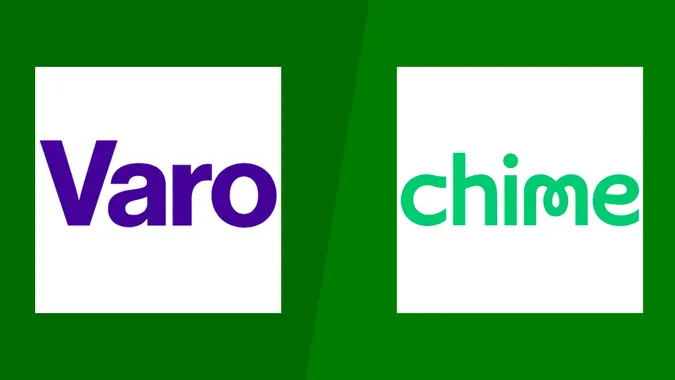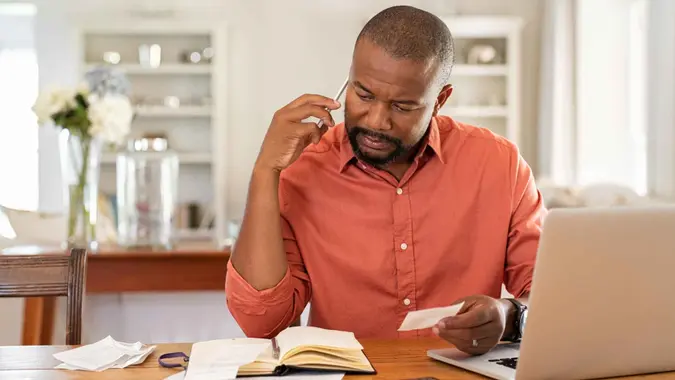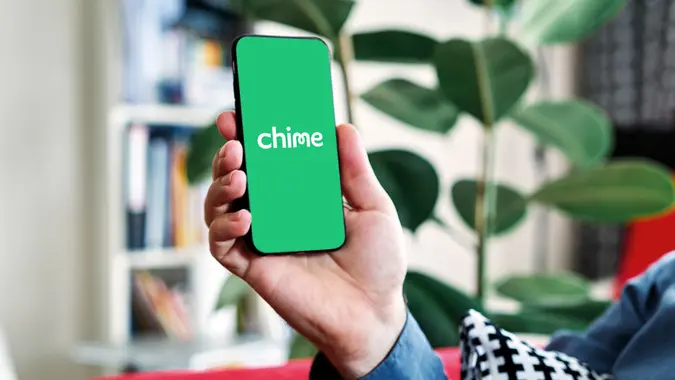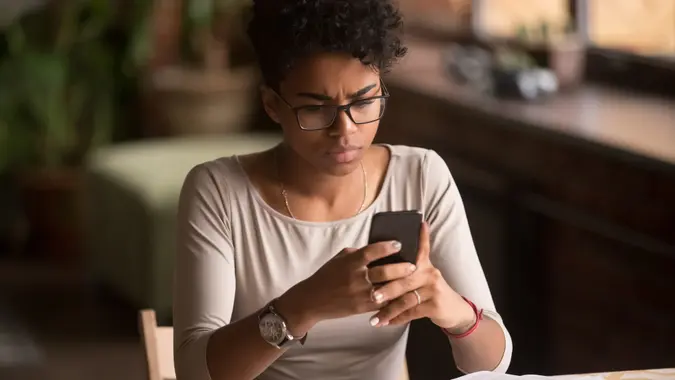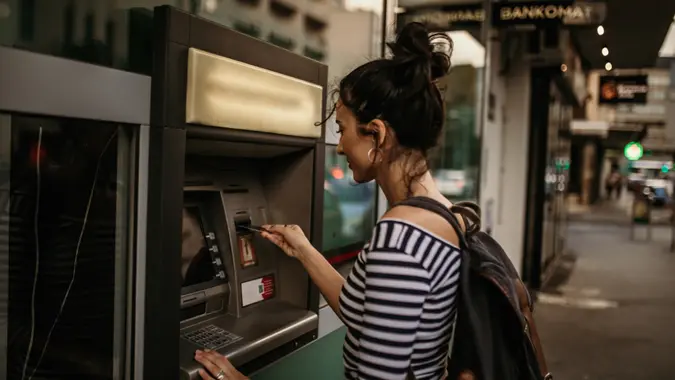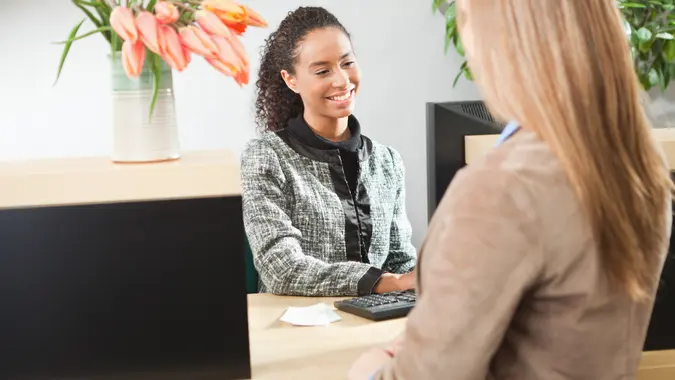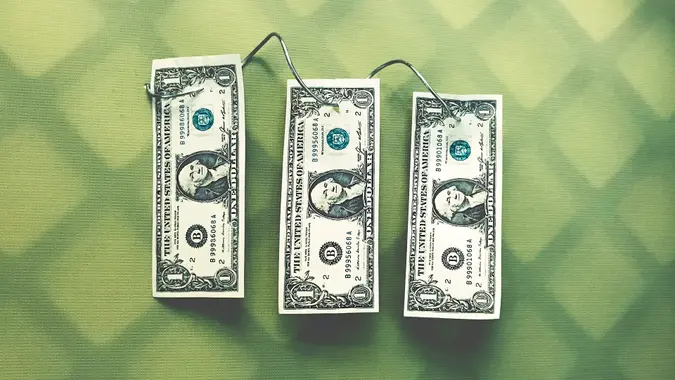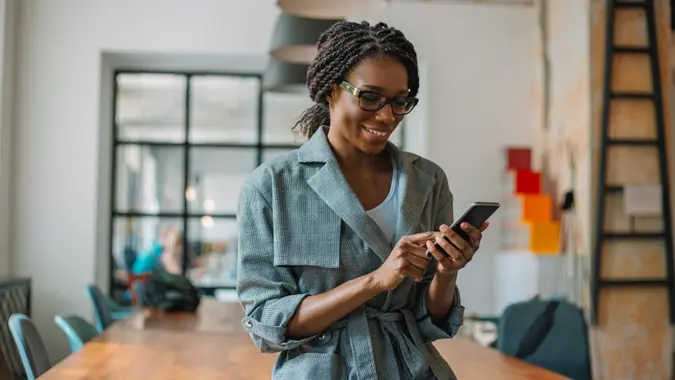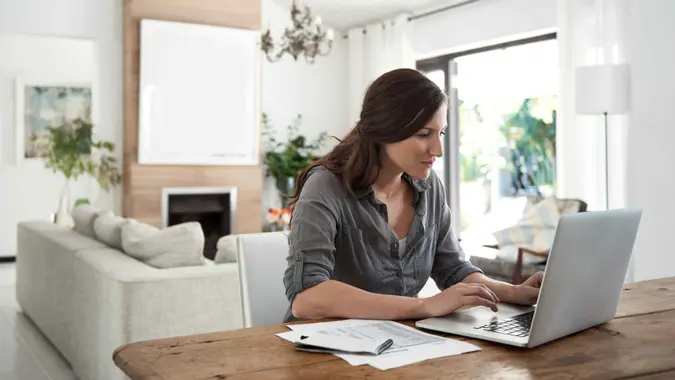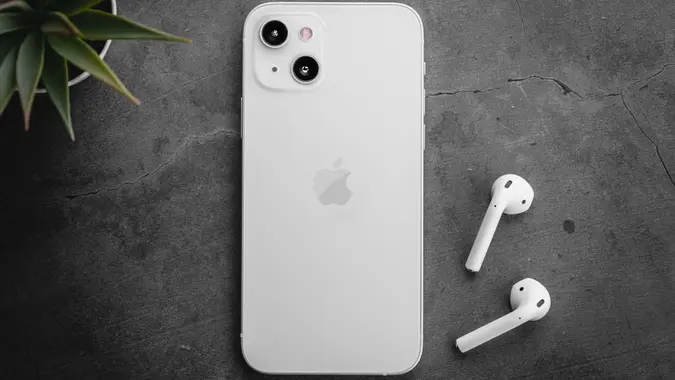Is PayPal Safe? What To Know Before You Send or Receive Money

Commitment to Our Readers
GOBankingRates' editorial team is committed to bringing you unbiased reviews and information. We use data-driven methodologies to evaluate financial products and services - our reviews and ratings are not influenced by advertisers. You can read more about our editorial guidelines and our products and services review methodology.

20 Years
Helping You Live Richer

Reviewed
by Experts

Trusted by
Millions of Readers
With cyber threats and scams becoming more sophisticated, it’s natural to wonder: Is PayPal safe to use? The short answer is yes — PayPal has strong security measures, including encryption, fraud protection and dispute resolution. However, no platform is completely foolproof, and there are still risks to be aware of.
How PayPal Keeps Your Info Secure
PayPal has been around since the late 1990s, and security has always been a top priority. Here’s how the platform keeps your money and personal information safe.
Bank-Level Encryption
As a part of their effort to keep transactions safe, they use end-to-end encryption. With this advanced encryption, any information transmitted from your device to PayPal is secure.
When you make a transaction, PayPal encrypts your financial data using 256-bit SSL technology — the same level of security banks use. This means your credit card, debit card and bank details aren’t exposed to sellers or recipients.
Two-Factor Authentication (2FA)
PayPal lets you enable 2FA, which requires a second form of verification when logging in. The second verification comes via a code sent to your mobile phone or authenticator app. This extra step helps keep hackers out of your account, even if they have your password.
You can enable secondary authentication with 2FA by going to your PayPal account and navigating to “Settings” and then “Security.” Once you click on the security tab, you can authorize two-step verification on your account.
Fraud Detection and Account Monitoring
PayPal constantly monitors transactions for unusual activity. If something looks suspicious, PayPal may flag the transaction, temporarily freeze your account or ask you to verify your identity.
No Need To Share Banking Details
One of PayPal’s biggest safety advantages is that you don’t have to share your bank or credit card information directly with sellers — PayPal acts as a middleman, keeping your sensitive financial details hidden.
Is It Safe To Use PayPal With People You Don’t Know?
If you use the proper payment choice, PayPal is safe with people you don’t know. Always use “Goods and Services” when paying people you don’t know. PayPal will offer buyer protection with this payment method.
These protections don’t apply to the “Friends and Family” method. Use this method only if you fully trust the person.
Buyer Protections
If you purchase something online and don’t receive the item, receive a fake product or get charged for something you didn’t buy, PayPal’s Buyer Protection policy can help you get your money back.
What’s Covered?
- Items that never arrive
- Items that arrive damaged or not as described
- Unauthorized transactions made on your account
If you run into one of these issues, you can file a dispute through PayPal, and if approved, you’ll receive a refund.
Example: If you buy a concert ticket but the seller never delivers it, you can report the issue to PayPal and request a refund.
Seller Protections
PayPal also helps sellers avoid chargebacks and fraud by offering Seller Protection — as long as the transaction meets certain criteria.
What’s Covered?
- Chargebacks related to unauthorized payments
- Claims that an item wasn’t received — if you have tracking information
Sellers must ship items to the buyer’s confirmed PayPal address and provide proof of delivery to qualify.
How PayPal Compares To Other Payment Platforms
Not sure if PayPal is your best option? Check out these PayPal alternatives and how they stack up.
| Platform | Encryption and Data Protection | Buyer Protection | Fraud Protection | Safe for Online Shopping? |
|---|---|---|---|---|
| PayPal | End-to-end encryption, 2FA | Yes, if you use “Goods and Services” | Detects and prevents unauthorized payments | Yes |
| Credit cards | Bank-grade encryption, chip technology | Strong buyer protection | Credit cards monitor for fraud | Yes |
| Zelle and Cash App | Encryption may lack additional security features | No to low buyer protection | Fraud risk is high | No — lacks protection for unauthorized transactions |
| Banks | Strong encryption and security protocols | Limited protection | Strong customer support and fraud resolution | Yes |
3 Tips To Keep Your PayPal Account Safe
Even though PayPal is secure, you can take extra steps to protect your account. Here’s a step-by-step breakdown:
1. Strengthen Your Account Security
- Use 2FA to prevent unauthorized access.
- Create a strong password that’s different from your other accounts.
- Avoid logging into PayPal on public Wi-Fi to reduce the risk of hacking.
2. Watch Out for Phishing Scams
- Scammers often send fake PayPal emails asking you to log in or verify your account.
- PayPal will never ask for your password via email.
- You should always log in at PayPal.com — never through email links.
3. Monitor Your Account Activity
- Set up email and SMS alerts to track your transactions.
- Check your bank statements regularly for suspicious charges.
- Report fraud immediately if you see something suspicious.
Final Takeaway: Is PayPal Worth Trusting for Your Transactions?
Yes, PayPal is one of the safest ways to receive and send money online. With encryption, fraud monitoring, and purchase protection, it’s a reliable choice for secure transactions.
- Use it for: Online shopping, secure transactions and business payments
- Be cautious when: Receiving payments from strangers, responding to suspicious emails or using “Friends and Family” for purchases
- Planning to use PayPal? Set up two-factor authentication, watch out for scams and regularly monitor your account to stay protected.
FAQs About PayPal Safety
Here are the answers to some of the most frequently asked questions regarding PayPal safety:- What is the risk of paying with PayPal?
- There isn't buyer protection with payments made via "Friends and Family" and so you may be a target of scams.
- How trustworthy is PayPal?
- It is widely trusted because of end-to-end encryption and 2FA, but like with any payment method, scams and fraud are a possibility.
- What are the disadvantages of using PayPal?
- Fees, lack of protection on certain transactions and account freezes are some of the cons of using PayPal.
- Will PayPal refund money if scammed?
- If you paid via "Goods and Services," you may be eligible for a refund. There isn't this protection if you pay via "Friends and Family."
Editorial Note: This content is not provided by any entity covered in this article. Any opinions, analyses, reviews, ratings or recommendations expressed in this article are those of the author alone and have not been reviewed, approved or otherwise endorsed by any entity named in this article.
Our in-house research team and on-site financial experts work together to create content that’s accurate, impartial, and up to date. We fact-check every single statistic, quote and fact using trusted primary resources to make sure the information we provide is correct. You can learn more about GOBankingRates’ processes and standards in our editorial policy.
- Paypal "Website"
- Paypal "Security Technology"
- Paypal "Purchase Protection"
- Paypal "Seller's Protection"
- Paypal "What is 2-step verification?"
- Paypal "How to identify fake messages"
 Written by
Written by  Edited by
Edited by 




